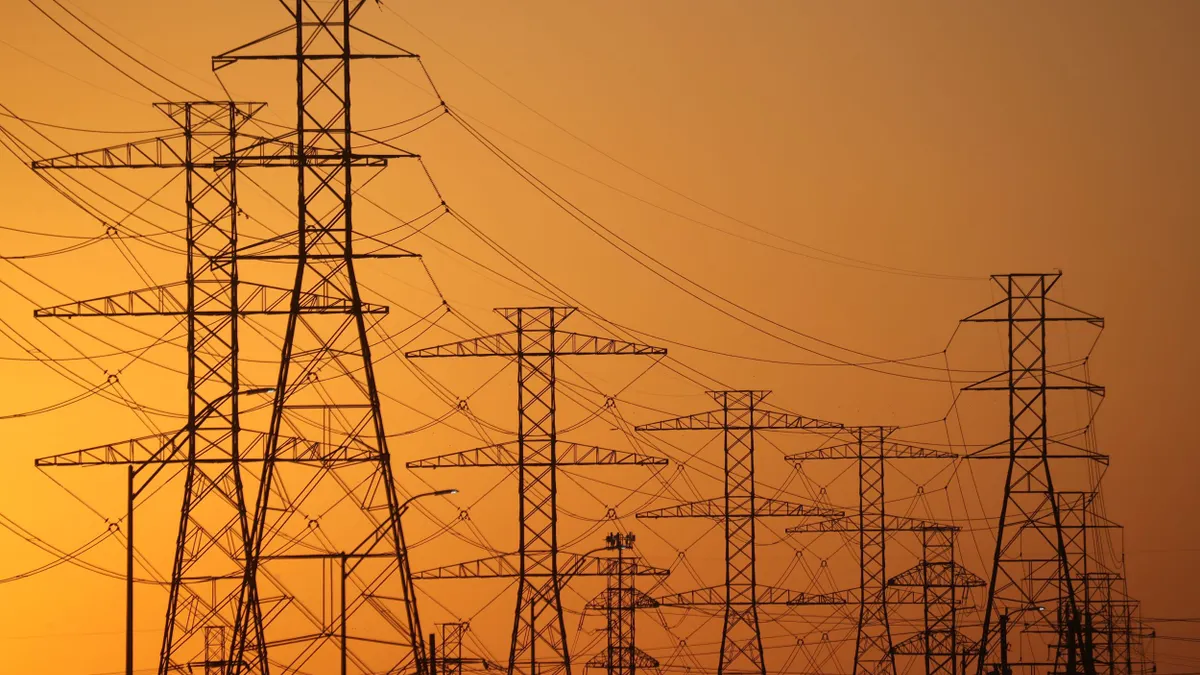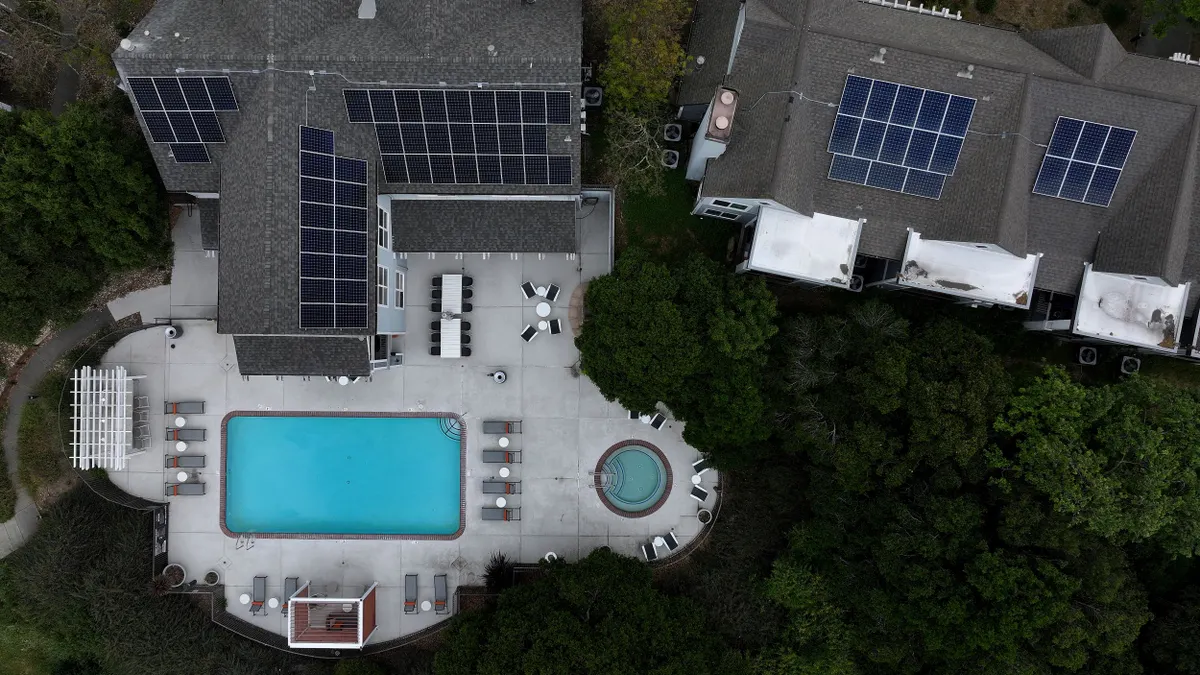The perverse incentive built into the way regulated utilities recover costs and earn profits is becoming an obstacle to utilities providing the best service to their customers.
The perverse incentive rewards utilities with a profit margin for making capital investments, but not for contracted services that might serve customers better. It has become an increasing concern as utilities discover that contracted services for distributed energy resources (DER) and cloud computing may provide more reliable and affordable customer service in certain circumstances.
Utilities have skilled engineers, accomplished accountants, and engaging customer engagement specialists. But they often cannot match the technology expertise of private sector DER providers or the data management expertise of IT-savvy cloud computing companies. The perverse incentive makes it detrimental to utilities’ bottom lines to contract for those experts’ services.
“Utility Earnings In A Service-Oriented World,” released Jan. 30 by the Advanced Energy Economy Institute (AEEI), proposes new cost recovery mechanisms that could neutralize the perverse incentive. With the right mechanism, utilities could recover costs for contracted services, AEEI says. Those services could accelerate utilities' ability to meet the demands of a 21st century grid.
Five mechanisms
Investor-owned utilities (IOUs) have been kept out of the economy-wide trend toward contracted services because operating expenditures cannot be ratebased, AEEI reports. But capital expenditures, including purchases of central generation and computer servers, along with an approved profit margin, are recovered via customer rates.
New expertise from private sector DER providers and cloud computing companies, often available only as contracted services, “improve[s] the utilization of, defer[s], or replace[s] capital investments,” AEEI reports. But those contracted services go into a utility’s operations budget rather than its rate base.
Paper lead author Danny Waggoner, AEEI senior manager for regulatory transformation, said utilities can even “jeopardize near-term earnings” because contracted services that cause an operations budget overrun reduce earnings, he told Utility Dive.
The paper describes two commonly used cost recovery mechanisms for utility spending. It also identifies five mechanisms that require regulatory changes to give utilities financial incentives “that better align their earnings with their ability to generate cost savings,” AEEI reports.
AEEI’s “Reference Case” is the commonly-used cost recovery mechanism of ratebasing a capital expenditure. The other commonly-used mechanism is “Service as O&M,” which allows utilities only a "minimal" return for contracted services.
AEEI’s Waggoner said these options “show the stark choice" created by the perverse incentive. A utility can propose a capital expenditure that recovers the shareholder investment, with a profit, or it can propose a solution that is good for customers but sacrifices earnings. The other five mechanisms described by AEEI are new concepts, he said.
The “DER Incentive Adder,” now being piloted in California, allows a utility a return of 4% of the total cost of contracted services, the paper reports.
“Capitalization of a prepaid contract” treats the cost of the contracted service like an expenditure for a physical asset. The utility prepays for all services through the contract term in advance. That amount of money is ratebased and the utility recovers it, plus earnings, annually over the life of the contract.
“Non-Wires Alternative (NWA) Shared Savings,” now available to utilities in New York, allows the utility to ratebase the prepaid cost of the contracted services and earn a return. As an added incentive, the utility is allowed to keep 30% of the savings from not purchasing infrastructure.
The “Modified Clawback Mechanism” allows the utility to benefit if its contracted DER or cloud computing services cost less than what the capital budget allotted for the avoided capital solution. It also protects the utility from losses if it overruns its operations budget.
“Pay-as-you-Go” combines aspects of the NWA, prepaid and clawback mechanisms, according to AEEI. The utility prepays for contracted services and ratebases the prepayment. And it is awarded a portion of the savings from not making a capital expenditure.
Using the five mechanisms
The paper analyzes the financial impacts of the two commonly used cost recovery mechanisms and the five alternative mechanisms on two “service solutions.” One solution is cloud computing services, “which take the place of utility investments in on-site computers, servers, and software,” the paper reports.
AEEI’s Waggoner said cloud computing is an example of how a contracted service can save ratepayer costs. “It allows the utility to avoid building its own servers and to access as-needed computing power,” he said.
The other service solution is DER “which defer or avoid utility investments in distribution equipment and infrastructure,” the paper adds. It includes “customer- or third party-owned assets such as solar installations, battery storage, or demand response.” It offers cost advantages for capital expenditures because the DER are paid for by customers and are already on the system.
AEEI modeled the financial impacts of the cost recovery mechanisms on DER and cloud computing in three scenarios. One is the “replacement” of a capital expenditure for an asset to be used for five years. The second is the “deferral” of a capital expenditure for a five-year asset. The last scenario is the replacement of a capital expenditure for an asset expected to last 40 years.
The three scenarios were necessary to capture the fact that cloud services and NWAs are not deployed in the same way, AEEI's Waggoner said. They do not replace the same type of capital investments.
The five year replacement scenario reflects the reality that utility cloud computing investment cycle typically has a five year lifespan, he said. NWAs replace grid infrastructure that often has a lifespan of 30 years to 40 years. The two NWA scenarios either delay a 40 year investment for five years or replace it entirely with services.
If a utility-contracted service is equal or lower in cost to customers than the capital expenditure to serve the same system need, “the five alternative mechanisms in many cases also provide equivalent or greater earnings to the utility,” AEEI concludes. That is “a win-win for consumers and utility shareholders.”
This fact that different mechanisms work for different scenarios shows there is no one best alternative mechanism but that "regulators have options,” AEEI's Waggoner said.
ConEd is “open to discussion of any rate model that aligns policy objectives, helps customers manage their energy use, and protects the utility business while continuing to provide funding for a reliable grid.”

Allan Drury
Spokesperson, Consolidated Edison
Former New York Public Service Commission (PSC) Chief of Accounting Thomas D’Ambrosia, a consultant on the AEEI paper, said one of the goals is to get utilities and private sector providers to work together on solutions.
AEEI’s Waggoner said the NWA, modified clawback, and pay-go mechanisms all allow shared savings and therefore give utilities a reason to work with private sector providers for lower cost services.
For example, a utility might prepay a $7 million service contract instead of making a $10 million capital expenditure on which it would earn $1 million, Waggoner said. The 10% earnings on the $7 million and the 30% share of the $3 million savings would likely total more than the earnings on the capital expenditure, he said. “And customers would save $2 million. That's a win-win.”
D’Ambrosia added that regulatory approval of the mechanism is needed to give utilities certainty that the calculated return is what they will be able to recover.
The New York and California experiences
“We are already there,” Consolidated Edison (ConEd) spokesperson Allan Drury said. A 2017 NYPSC order (15-E-0229) approved an NWA-like mechanism that allows utilities to ratebase contracted DER services to defer or replace expenditures for distribution system infrastructure.
ConEd initially proposed a mechanism that would have allowed the utility a higher rate of return for DER solutions than a normal return for a capital expenditure, regardless of savings. The NYPSC modified the proposal, linking the utility’s earnings to savings, Drury emailed Utility Dive. Its ruling allotted 30% of the savings to the utility, leaving 70% for customers.
“As of yet, there are no projects in service under this new structure,” Drury said. “But there will be.”
The commission “encourages non-wires solutions" and approved ConEd’s groundbreaking Brooklyn-Queens Neighborhood NWA Program even before the new cost recovery mechanism was in place, Drury added. That program “has been so successful that we are able to continue procuring DERs past the original 2018 plan and without any additional funding.”
ConEd expects customer demand for solutions most cost-effectively obtained through contracted services “to accelerate,” Drury said. Because such solutions also help meet system needs, they will require regulation to “evolve.”
ConEd is “open to discussion of any rate model that aligns policy objectives, helps customers manage their energy use, and protects the utility business while continuing to provide funding for a reliable grid,” he added.
Mike Florio, senior fellow with California think tank Gridworks, was commissioner in charge of the California Public Utilities Commission (CPUC) proceeding that approved the 4% DER Adder on which the AEEI proposal is based.
The 4% adder was intended to keep the incentive as low as possible, but to make it high enough to encourage utilities to move to NWAs, Florio told Utility Dive. “Giving them the full rate of return when they're not actually investing any capital was overkill.”
“These one-off mechanisms are ways to nudge things away from the traditional cost-of-service determination of revenue requirements and get both sides comfortable with the idea that incentives make a difference.”

Mike Florio
Senior Fellow, Gridworks
The adder was based on data and conclusions in “You Get What You Pay For: Moving Toward Value in Utility Compensation,” from the Wisconsin PSC, he said. That paper found “the allowed rate of return relative to the actual cost of capital to the utility determines whether the utility has an incentive to invest.”
Jury still out
The Florio-led order approved limited pilot NWAs, which are still in California IOUs’ solicitation processes, so “the jury is still out on whether the DER adder will work,” Florio said. Its effectiveness is also unclear because the IOUs are being pushed toward NWAs by the state’s influential distributed generation advocates, which “undercuts the argument that they need a financial incentive.”
The concern with a shared savings approach is that “it requires quantifying the cost of the alternative investment,” Florio said. “It sets up a huge fight over an unknowable, or at least currently unknown, number.” Those debates are part of long term planning for central station generation and transmission infrastructure, but remain highly controversial in discussions about distribution system expenditures, he added.
Ratebasing prepaid contracts was not considered in the CPUC proceeding, but might be workable because “it uses a quantifiable number,” he added.
Notwithstanding the DER advocates, an effective incentive is vital, Florio said. NWAs benefit customers, but utilities must propose them “and it is hard to see them working hard to undermine their own rate base growth,” he said. “Rate base sometimes seems like an addictive drug.”
The benefit to customers is driving the need for new ways of allowing utilities to consider contracted services. But there is minimal evidence that utilities and other stakeholders are ready to move toward comprehensive performance-based rate making and multi-year rate plans, Florio said. Utilities are concerned such plans would limit their returns and consumer advocates are concerned they would increase returns.
“These one-off mechanisms are ways to nudge things away from the traditional cost-of-service determination of revenue requirements and get both sides comfortable with the idea that incentives make a difference,” he said.
Looking ahead
Certified Public Accountant and paper co-author Kent Bond said utility regulators will be forced to consider rule changes that include the AEEI-proposed alternative mechanisms to protect customers’ interests. “Utilities are not going to consider these alternative options until the rules get changed to provide returns of using them.”
Such rule changes will give utilities two other important opportunities. One is the opportunity to contract for services from specialists that can deliver them “much more efficiently than a utility can provide them in-house,” he told Utility Dive. Another is the opportunity to “update rapidly changing technologies” through contracted services instead of having to work with outdated, utility-owned assets.
The one big obstacle could be reliability. There is not an agreed-on metric to measure the reliability of contracted services, Bond said. "Utilities may resist using contracted services by arguing that when a function is in a third party’s hands, the utility cannot control it but is still responsible for keeping the lights on."
Even after his work on the paper, Bond could not pick one mechanism as the best. But he also does not see utility commissions offering a range of options, because that would make ratemaking even more unwieldy and contentious than it is.
“The mechanism will probably vary commission to commission,” he said. “And the mechanism the commission chooses will determine how much contracted services its utilities use.”






















